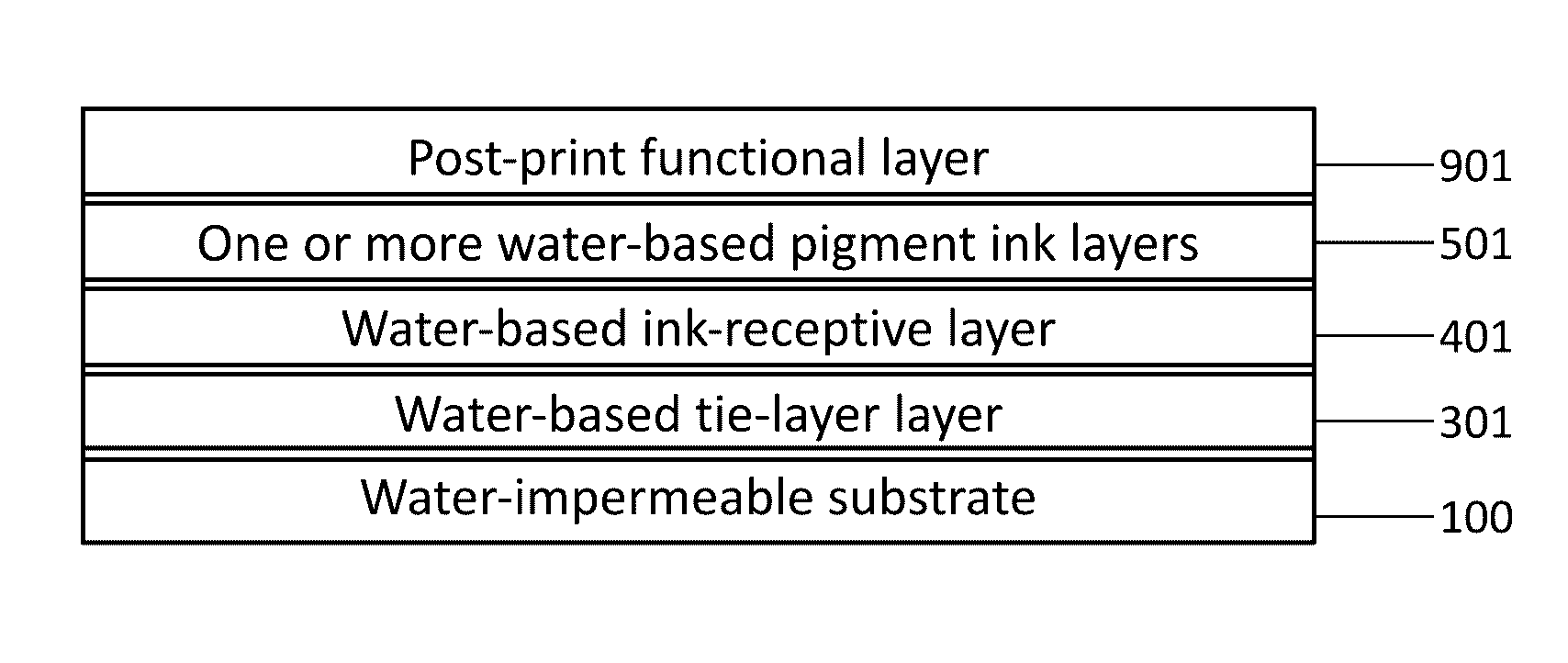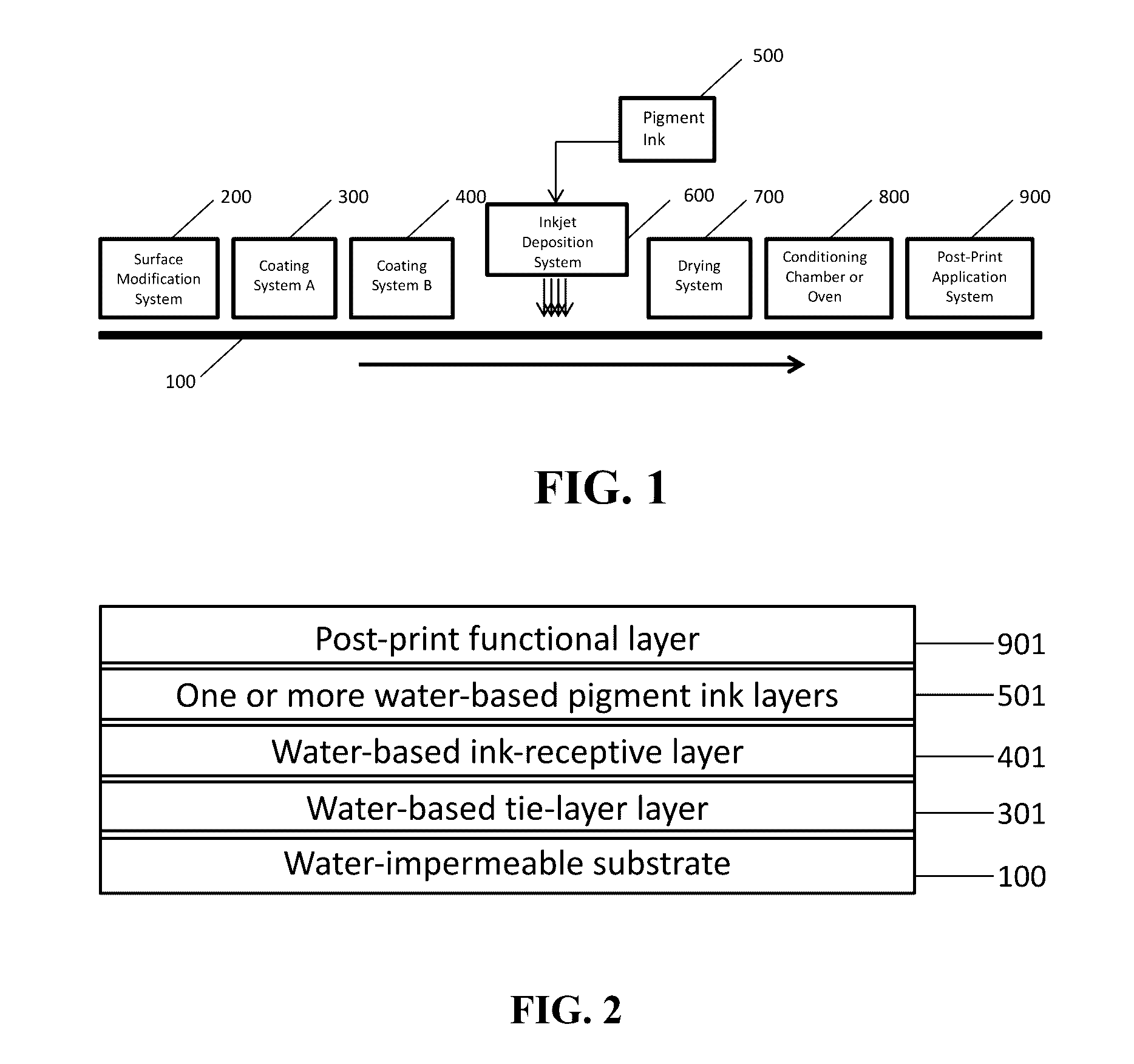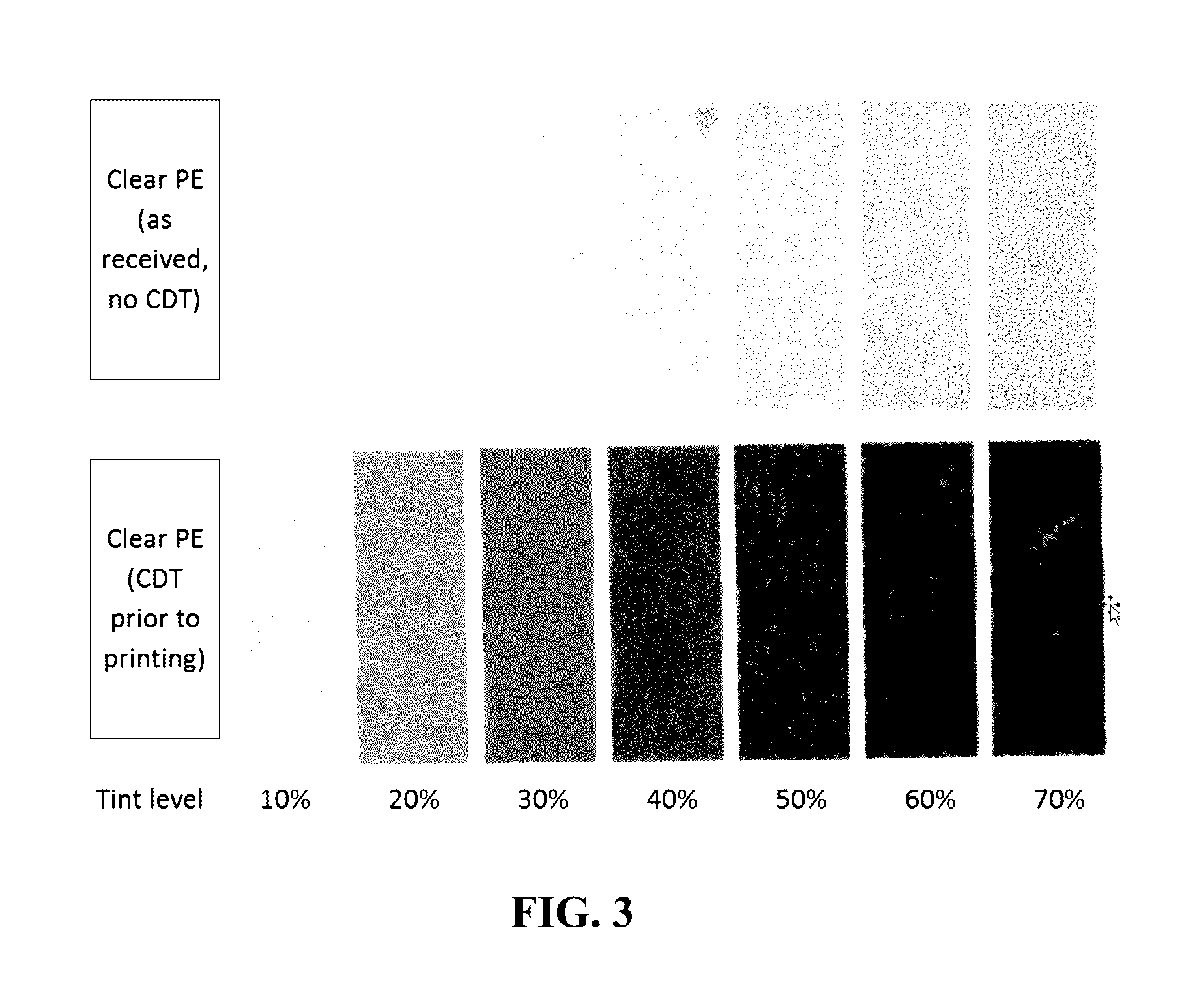Multilayered structure with water-impermeable substrate
a multi-layered structure and water-impermeable technology, applied in the direction of adhesive types, synthetic resin layered products, inks, etc., can solve the problems of water-based inks that are particularly difficult to apply to plastic substrates, limited to certain types of inkjet printing systems, and image quality artifacts known as mottle, coalescence, intercolor bleeding, etc., to achieve high print quality, high durability, and high speed
- Summary
- Abstract
- Description
- Claims
- Application Information
AI Technical Summary
Benefits of technology
Problems solved by technology
Method used
Image
Examples
examples
[0085]1. Comparative. A range of commercially available, unprimed impermeable polyolefin film substrates were obtained from several suppliers. The surface energies of these films were estimated by using a set of “dyne pens” (Accudyne Test Marker Pens, Diversified Enterprises, Claremont, N.H.). These films were printed with an anionically stabilized water-based pigment ink (KODAK PROSPER Press packaging black ink) using a KODAK STREAM continuous inkjet printing apparatus. This ink has a static surface tension of 38 dyn / cm, and contains 8.5 wt % glycerol as a co-solvent / humectant. A test image containing patches from 0 to 100% ink coverage in 10% increments was printed (“step wedge”). Another set of these same films were surface treated with a corona discharge treatment apparatus, the surface energies were re-measured, and the films were printed in the same manner. The films were air-dried overnight, but remained slightly tacky for several days. A final dry at 60° C. for 2 hour was do...
##ventive example 3b
Inventive Example 3B
Water-Based Tie-Layer
[0098]The same materials and procedures of Example 3A were used, except for the use of Bicor 84AOH OPP film (ExxonMobil) instead of the plain, uncoated 2-mil OPP film. The Bicor OPP film is 0.84 mil (21 um) thick, and comprises a water-based tie-layer, approximately 0.4-um thick, on one surface. The water-based tie-layer composition further comprises two sub-layers as disclosed in U.S. Pat. No. 5,380,586, with the outermost layer comprising a cross-linked polyvinyl alcohol. The water-based ink-receptive layer described above in Example 3A was coated over this layer and dried. The resulting ink-receptive layer was again smooth and uniform with a similar coat weight as Example 3A.
[0099]The inventive example 3B was printed and tested as described above for Example 3A. The test image was air-dried under ambient conditions for 24 hours and all color patches were found to be dry to the touch. The results are summarized in the following table.
[0100]...
##ventive example 5b
Inventive Example 5B
Non-Porous Ink-Receptive Layer
[0111]A solution comprising 50 parts acetylacetonate-modified polyvinyl alcohol (Gohsfimer Z320, Nippon Gohsei), 10 parts anhydrous CaCl2 (Dow Chemical), 0.25 parts Cartabond TSI (Clariant), and 1 part Lanco 1799 PTFE wax particles (Lubrizol) was prepared in water containing 10G surfactant (p-isononylphenoxypoly(glycidol)) to yield a solution containing 10% total solids content. This solution was coated using a reverse gravure technique on Bicor 84AOH OPP film (Exxon Mobil) over the side coated with polyvinylalcohol, but used a gravure cylinder with a fluid capacity ˜ 1 / 10th that used for sample 4a. After drying, the resulting coating has a dry coverage of approximately 0.5 g / m2 and is transparent and colorless.
[0112]The comparative and inventive coated films were printed with water-based anionically stabilized pigment ink in the same manner as described in Examples 3A and 3B. The test image containing patches from 0 to 100% ink cove...
PUM
| Property | Measurement | Unit |
|---|---|---|
| temperatures | aaaaa | aaaaa |
| viscosity | aaaaa | aaaaa |
| viscosity | aaaaa | aaaaa |
Abstract
Description
Claims
Application Information
 Login to View More
Login to View More - R&D
- Intellectual Property
- Life Sciences
- Materials
- Tech Scout
- Unparalleled Data Quality
- Higher Quality Content
- 60% Fewer Hallucinations
Browse by: Latest US Patents, China's latest patents, Technical Efficacy Thesaurus, Application Domain, Technology Topic, Popular Technical Reports.
© 2025 PatSnap. All rights reserved.Legal|Privacy policy|Modern Slavery Act Transparency Statement|Sitemap|About US| Contact US: help@patsnap.com



